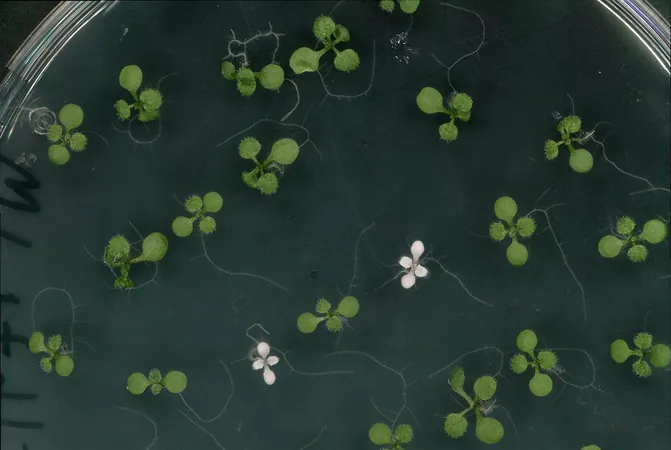
Revolutionary Crop Editing Method Could Transform Global Agriculture
2025-04-24
Author: Rajesh
In a groundbreaking study from UCLA, researchers have unveiled a game-changing method for crop editing that promises to enhance food security by improving crop yields and resilience to climate change. Traditional breeding methods have long been hampered by inefficiencies and high costs, but this new approach could alter the agricultural landscape.
Led by UCLA's Steven Jacobsen and collaborating with CRISPR pioneer Jennifer Doudna and microbiologist Jill Banfield from UC Berkeley, the team developed a transgene-free genome editing technique. They utilized a compact CRISPR system delivered via a common plant virus, making the method not only simpler but also capable of targeting a wider array of plant species.
The Breakthrough: Virus as a Delivery System
This novel technique leverages the tobacco rattle virus to deliver the CRISPR-like enzyme ISYmu1 directly into the model plant Arabidopsis thaliana. This allows precise genetic edits that can be inherited through generations without retaining any viral or foreign DNA.
Doudna stated, "CRISPR has the potential to make a huge impact in agriculture—one that can be customized to local needs around the world." This technology streamlines the editing process into a single step, bypassing the bottlenecks of conventional methods that involve complicated tissue cultures and cell regenerations.
Compact Tools Make All the Difference
Traditional CRISPR systems were too large for plant viruses, but by utilizing a smaller enzyme, the researchers ensured that the tools could travel throughout the plant and reach critical reproductive cells. Their testing revealed that ISYmu1 was the most effective compact CRISPR system capable of enacting these changes.
From Lab to Farm: Real-World Applications
The engineered virus was introduced into plants using a natural soil bacterium, resulting in visible signs of genetic edits, like white patches showing the changes made. Importantly, as the virus does not infect seeds, the resultant plants are genetically modified but free from viral remnants or foreign material.
A Bright Future for Diverse Crops
The potential of the tobacco rattle virus is vast, capable of infecting over 400 plant species. Jacobsen expressed optimism for applying this technology to challenging crops that require innovative solutions. He emphasized the importance of making these advancements accessible to under-resourced crops in developing regions, inspired by his own background in agriculture.
Collaborative Power in Science
This study showcases the combined strengths of experts in CRISPR development, novel system identification, and plant applications. Together, these researchers have created a platform that could significantly impact the future of crop breeding.
What's Next for Crop Editing?
As the team expands their research, they will test the system in other important crops and work on enhancing its capabilities to enable multiple genetic edits at once while improving efficiency. This innovative approach to crop editing could lead to a revolution in sustainable agriculture, ensuring food security for generations to come.





 Brasil (PT)
Brasil (PT)
 Canada (EN)
Canada (EN)
 Chile (ES)
Chile (ES)
 Česko (CS)
Česko (CS)
 대한민국 (KO)
대한민국 (KO)
 España (ES)
España (ES)
 France (FR)
France (FR)
 Hong Kong (EN)
Hong Kong (EN)
 Italia (IT)
Italia (IT)
 日本 (JA)
日本 (JA)
 Magyarország (HU)
Magyarország (HU)
 Norge (NO)
Norge (NO)
 Polska (PL)
Polska (PL)
 Schweiz (DE)
Schweiz (DE)
 Singapore (EN)
Singapore (EN)
 Sverige (SV)
Sverige (SV)
 Suomi (FI)
Suomi (FI)
 Türkiye (TR)
Türkiye (TR)
 الإمارات العربية المتحدة (AR)
الإمارات العربية المتحدة (AR)